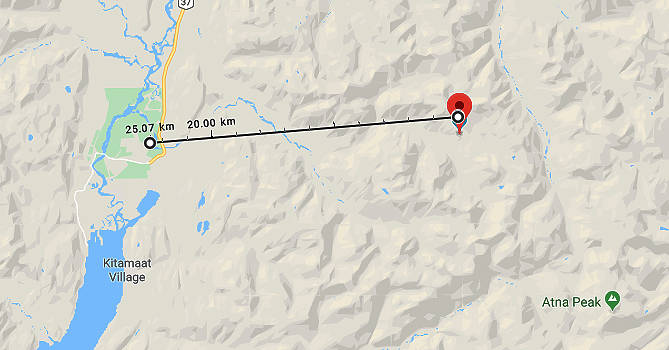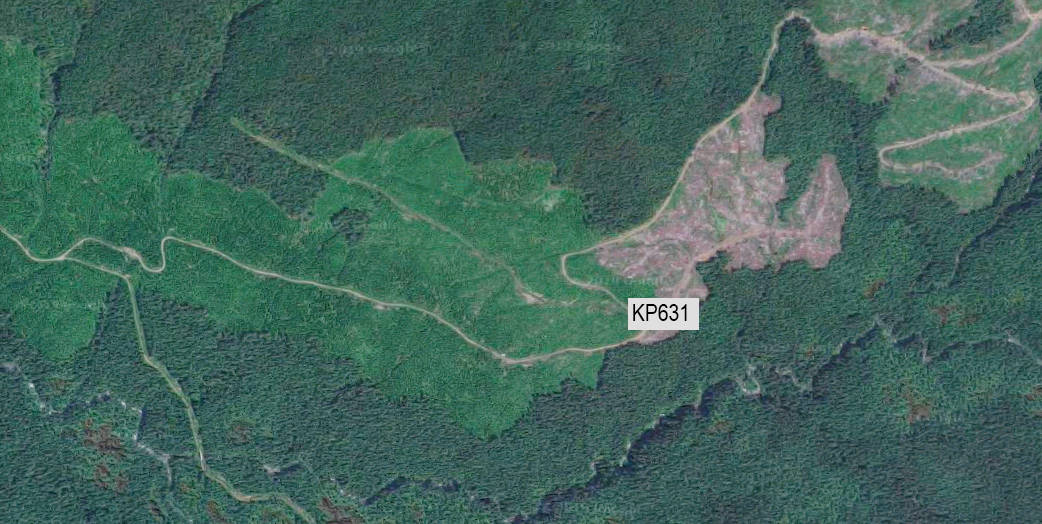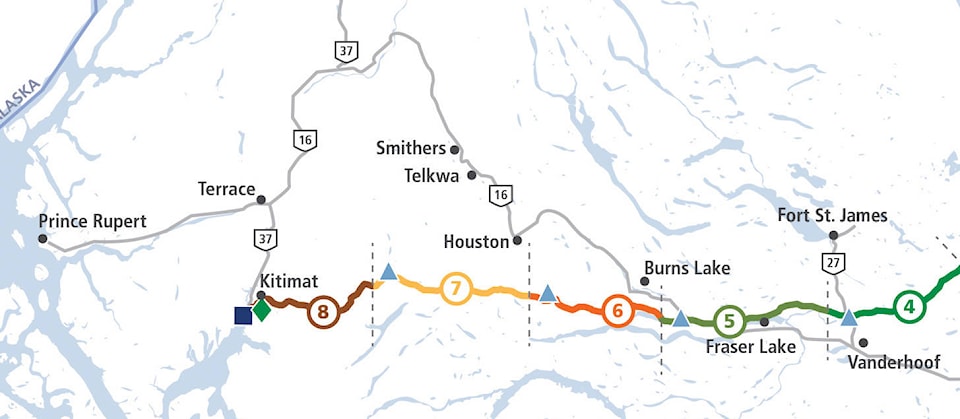The company that will build the pipeline carrying natural gas to the LNG Canada facility in Kitimat has once again had to stop work on clearing the right-of-way.
Coastal GasLink (CGL) announced last week that an internal audit by the company had revealed a number of instances where “approved Archaeological Impact Assessments were not in place” before construction started.
As a result work along the right-of-way (ROW) in Section 8 of the pipeline, the last section of the pipeline between Dawson Creek and Kitimat, has been halted until an internal review is completed.
CGL president David Pfeiffer personally apologized for the error, saying the company is committed to protecting B.C.’s environmental and cultural values during the pipeline’s construction.
“I have directed the team to complete a thorough investigation of these incidents and have halted clearing work in the area until the investigation is complete and recommendations are put into practice,” said Pfeiffer.
“I have also apologized to the impacted Indigenous communities and requested their participation in a proposed post-impact assessment.”
The clearing took place on two areas in Section 8, near kilometre posts (KP) 585 and 631.
At KP631, which is about 25km from Kitimat on traditional Haisla territory, an area of approximately 2,400 m² was cleared without an AIA being completed. Areas adjacent to the cleared area were covered by an approved AIA, identified as a low likelihood of archaeological significance. However, due to a necessary re-routing of the ROW, the area cleared fell outside of the approved AIA areas.
On Friday the Northern Sentinel reached out to HNC interim communications coordinator Sarah Artis for comment – however, at the time of going to press on Tuesday the HNC had not yet responded.
At KP 585, 60km from Kitimat, between Kitimat and Houston, a 30,000 m² area was cleared without an approved AIA in place on what is traditionally considered Wet’suwet’en territory.
“Areas adjacent to this location did have an approved AIA and were identified as a low likelihood of archaeological significance. While clearing activities have taken place, minimal ground disturbance has occurred since the area has been used for transit and corduroy mats had been placed to limit disturbance,” reads a statement from CGL.
The company stressed that it had voluntarily disclosed the incidents to the BC Oil and Gas Commission and had informed the BC Environmental Assessment Office.
The BCOGC said on Friday it had received CGL’s report and had launched an investigation.
“CGL self-reported to the BCOGC that it had undertaken cutting in the pipeline right-of-way and a section of road without the necessary archaeological assessment. The Commission’s investigation is ongoing,” said the BCOGC in a statement.
This isn’t the first time CGL has stopped work along the ROW – in February this year the company suspended pipeline work south of Houston to investigate claims of the discovery of Indigenous artifacts on the site.
READ MORE: We should have been consulted about artifacts
The Unist’ot’en clan, a hereditary house group of the Wet’suwet’en First Nation, said supporters recovered two ancient stone tools at the site – CGL suspended work on the line while the BCOGC investigated
In March the commission announced the artifacts found at the construction site were likely not in their original location.
“The soils upon which the artifacts were found would not typically contain any such cultural artifacts and this was likely not their original location,” the commission said.
In March work came to a halt again when the company voluntarily informed the BCOGC that it had cleared trees in an ungulate (moose) winter range in a restricted activity period.
CGL’s Pfeiffer said when the clearing was discovered, work was immediately stopped, the Oil and Gas Commission notified and a full review launched into how the clearing happened outside the permittable period.
“We take compliance very seriously and we are working with the Environmental Assessment Office to return to compliance. We continue to strive to not only meet but exceed regulatory requirements,” said Pfeiffer at the time.
The provincial government’s Archaeology Branch requires AIAs where potential conflicts exist between archaeological resources and a proposed development, and apply mainly to development projects that are subject to B.C.’s environmental impact assessment and review processes.
The AIAs are conducted by a qualified professional archaeologist on behalf of the developer, who may recommend one of three options – completely avoiding a site, recovering archaeological site information prior to clearing, or monitoring for additional archaeological site information during clearing activity.


